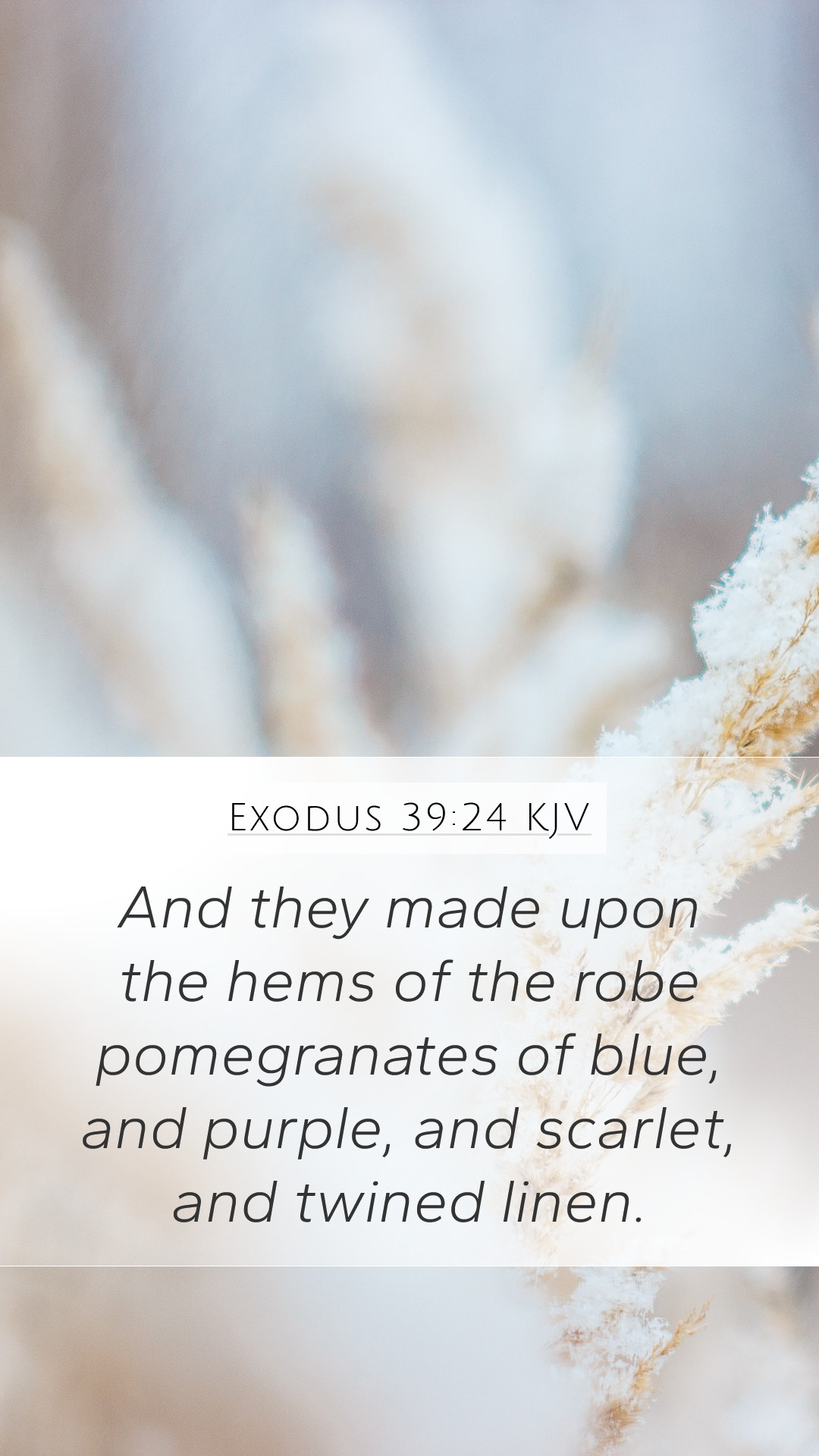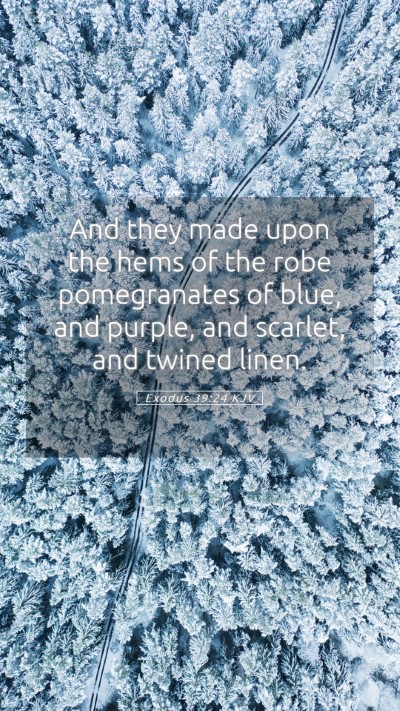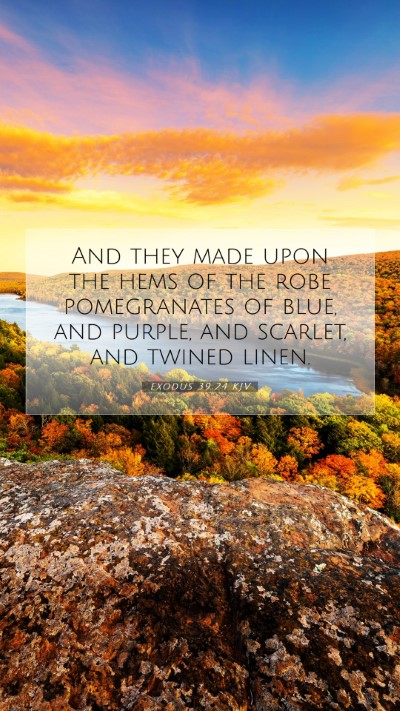Understanding Exodus 39:24
Exodus 39:24 states, “And they made upon the hems of the robe pomegranates of blue, and purple, and scarlet, and twined linen.” This verse focuses on the intricate details of the High Priest's garments as commanded by God, reflecting both the beauty and significance of the priestly attire in ancient Israel.
Bible Verse Meaning
The meaning of this Bible verse can be explored through commentary from public domain sources. Commentators such as Matthew Henry, Albert Barnes, and Adam Clarke shed light on its implications.
Matthew Henry's Commentary
Matthew Henry emphasizes that the pomegranates symbolize fruitfulness and abundance, suggesting that the High Priest, as a representative of the people before God, is adorned with elements that signal wealth and God's blessings. The design and colors used are significant, as they communicate both beauty and the glory of God's presence.
Albert Barnes' Commentary
Albert Barnes explains that pomegranates were part of the symbolic imagery associated with the tabernacle. They represent fertility and the idea of bringing forth good works as a result of divine blessings. By incorporating them into the priest’s robe, the verse highlights the important role of the priest, who mediates between God and His people.
Adam Clarke's Commentary
Adam Clarke discusses the remarkable craftsmanship involved in making the priestly garments. He notes that the elegance of the robe, adorned with pomegranates, serves to honor God's holiness and the sacredness of the priest’s duties. This attention to detail reinforces the idea that worship and service to God are not only spiritual but also deeply aesthetic.
Scripture Analysis
In analyzing this verse, it is essential to look at its historical context and the regulations surrounding the priesthood in the Old Testament. The beautiful attire not only represents the priest's duties but also serves as a visual reminder of God's covenant with Israel.
Significance of the High Priest's Garment
The High Priest's garments, including the pomegranates on the robe, carry spiritual significance:
- Representation of God’s Presence: The priest was seen as the mediator between God and the people.
- Symbol of Abundance: Pomegranates symbolize fertility, abundance, and the blessings of God.
- Aesthetic Beauty: The beauty of the garments reflects the glory of God and the importance of worship.
Connecting to Other Scriptures
Exodus 39:24 relates to several other biblical passages that explore themes of priesthood and worship:
- Exodus 28:33-34 - Details the garments of the High Priest and their significance.
- Leviticus 8:7-9 - Discusses the anointing of Aaron and his sons as priests.
- Hebrews 5:4-6 - Refers to the priesthood of Christ and its fulfillment.
Application of Bible Verse
Understanding this verse allows for a deeper insight into the role of aesthetics in worship. It teaches that our service to God, like the priestly garments, should be approached with care, commitment, and an understanding of divine symbolism. This can be applied in our lives through:
- Personal Worship: Engaging in worship that honors God involves the heart, mind, and also aesthetics that glorify Him.
- Community Involvement: Just as the High Priest represented the community, we are called to reflect God's love and blessings in our interactions.
- Spiritual Growth: The abundance symbolized by the pomegranate reminds us to cultivate our spiritual lives with good deeds.
Bible Study Insights
For those involved in bible study groups or seeking online bible study resources, consider these insights for deeper understanding:
- Explore the significance of the colors and materials used in the High Priest’s garments.
- Discuss the symbolism of pomegranates in other biblical literature.
- Analyze the relevance of Old Testament priesthood in the light of New Testament teachings.
Conclusion
In summary, Exodus 39:24 invites us into a rich understanding of beauty, service, and the spiritual meaning behind the High Priest's attire. By studying this verse, believers gain insights not just into the ancient practices, but also the enduring principles that apply to personal and communal worship today.


